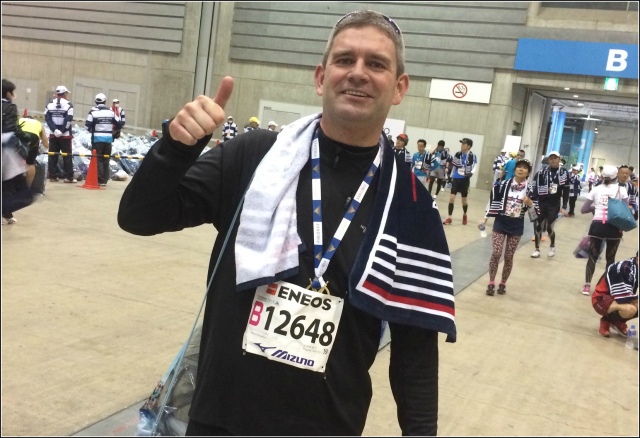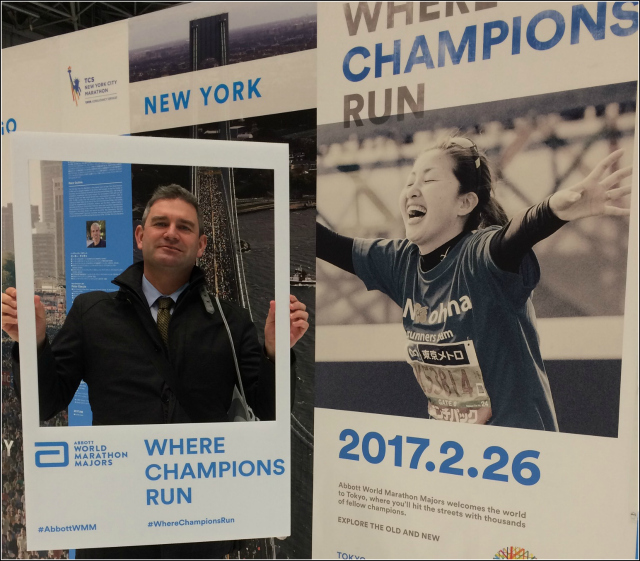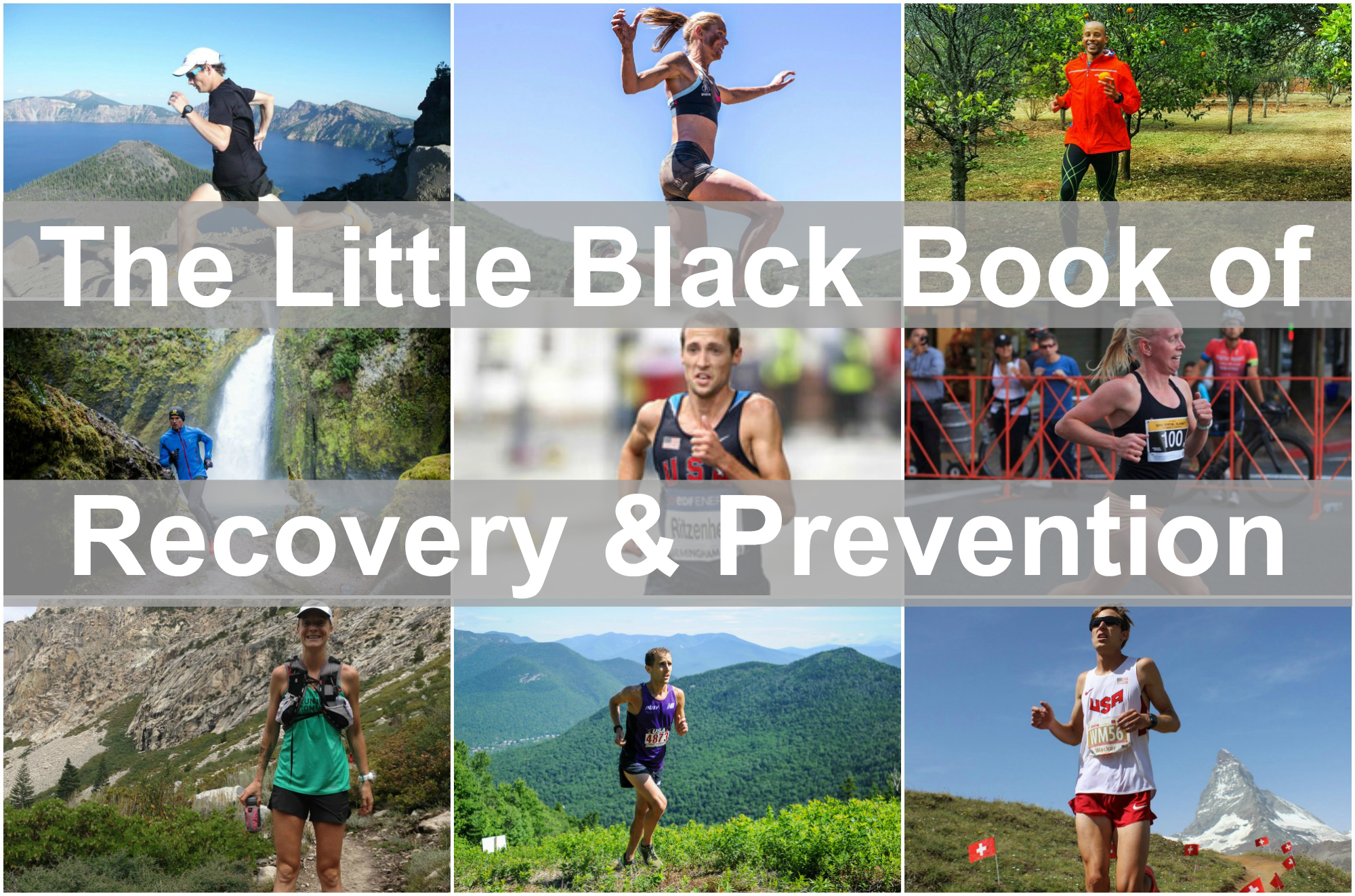Running can be a tough sport – with an annual injury rate hovering around 50-70%, staying healthy can be daunting. But this is a happy story! Meet Geoff:

Geoff came to running later in life but his love for the sport quickly grew. Like many runners, he started with the 5k distance and gradually worked his way up to a 10k, half-marathon, and marathon.
Throughout his first years of running, Geoff only suffered one major injury: a tibial stress fracture while training for his first marathon. Once that injury healed, he was able to return to training for several races each year, which usually included at least one half marathon and marathon.
But soon, a string of injuries nearly made him quit the sport altogether.
The Beginning of the Injury Cycle
Soon Geoff began to struggle with a series of injuries. First, he struggled with plantar fasciitis. He cut back his running and thought he had recovered.
But when he raced his goal marathon in 2016, he finished with another injury – this time in his hamstring.
With this setback, a few weeks off weren’t enough. The hamstring pain came back with a vengeance as soon as he tried to run again – this time, sidelining him for six months.
Unfortunately, many runners experience a similar merry-go-round of disfunction. Though your injuries may be different, the pattern is often the same:
- Step 1: Get injured
- Step 2: Take time off from training
- Step 3: Build back up only to get injured again in 2-3 months
- Step 4: Repeat!
At best, it keeps us from achieving our running goals and can be frustrating. At worst, it can be demoralizing enough to make us think we’re just not suited for the sport of running.
Geoff describes it this way:
I decided to take another break, and had a feeling in the back of my head that I was in fact hanging up my shoes forever. At the same time, work and family were keeping me busier than ever, so justification for doing nothing about my situation was a bit too easy to come up with.
But quitting the sport of running is never a good option – especially when there’s a solution.
A Resolution to Change
Tired, frustrated, and struggling with weight gain from living a more sedentary life, Geoff made the decision to turn things around.
It wasn’t easy, though. He told me:
Although I’ve been a Strength Running follower for years, for some foolish reason I believed that all your advice was for other runners.
Right about that time I received an email from SR which told me what I already knew: If I wanted to run, and run forever, I needed to commit to getting stronger. So I made the leap.
In Geoff’s case, his leap involved resolving to fix his injury cycle.
He knew rest alone hadn’t fixed his injuries (after all, rest is not treatment!) and that his previous training hadn’t been sustainable. To become a healthy, lifelong runner, he had to break out of the training habits that had created his ongoing injury cycle.
Geoff admits he was reluctant to change his ways; the decision to do thing differently didn’t come easily at first. For many years, his training had worked even though he admits to being “consistently inconsistent.”
He ran and trained aggressively when races were on the schedule, but his off-season running varied wildly from week to week. At first his aggressive race schedule and training led to big improvements – but eventually, injuries caught up with him.
Geoff admits that his reluctance to follow someone else’s training program stemmed from the worry that it would restrict his freedom and lessen the joy he got from running.
He explained to me how he felt:
I avoided following a program for so long because I thought it would box me in. Like most runners, I love the freedom of running. I love being out there at 4:30 a.m., when no one else is around, pushing myself for my own sake…
I’ve always thought of training plans and prescribed training formulas as a virtual nag – a guilt-dishing, screeching voice in my ear, serving no other purpose than to sap all the joy out of running.
I’m sure you might be able to relate: when running is your escape and your happy place, it can be challenging to impose a different structure on it than you’re used to.
But Geoff made a critical realization: that structure made running even more enjoyable.
As with many things in life, changing your mindset is often more than half the battle. This was especially true for Geoff. Once he made the decision to embrace change and follow a new program, he found that the actual transition was relatively easy.
Slowing Down and Building Athleticism

Geoff was already a motivated runner who loved to push himself and was driven to improve. He followed the lessons from our injury series and was soon doing things differently:
- Base and recovery runs were done at the appropriate paces
- More variety was introduced in his training
- Athleticism and strength were prioritized (not just running)
Running too hard, too often, is a sure route to injury. So is a lack of variety, strength, and overall athleticism. But with Geoff invested in the program, he soon learned the importance of becoming a well-rounded athlete in order to sustain his running.
As I often say, running by itself is not enough to prevent injuries. Geoff explains it perfectly:
Stop thinking of running in isolation. As I’ve heard you say before Jason, I need to think of myself as an athlete who happens to run.
Although Geoff does not have any immediate racing plans, he’s grateful to be running again injury free and is building his base miles with steady consistency. He values the many positive changes from his new plan, but especially:
1) It’s practical and gimmick-free, so it’s easy to implement.
2) The effects (for me) were noticeable very quickly. It requires consistency, of course, but if you can maintain that consistency, I think the results would be apparent to most runners in situations similar to mine in fairly short order.
He admits that had he followed his own advice and made some changes sooner, he probably could have avoided losing nearly a year of running.
Now that he is healthy again, Geoff’s focus is to make running a part of his life for the long haul:
Slow and steady, in the metaphorical sense, wins the race. While I will continue to set new race goals, those will not come at the expense of the bigger goal, which is a lifetime of healthy running.
With Geoff’s new mindset, healthy running and new PR’s will both be waiting for him in the years ahead!
How You Can Train Like Geoff
Geoff might seem like an outlier – one of those mythical running “unicorns” who somehow abandons all injuries and runs pain-free after years of struggle.
But we’ve seen this story before. Over and over again, we see runners overcome seemingly permanent disabilities to run faster than ever before.
It’s not a pipe dream and it can happen to you.
If you struggle with injuries or are currently injured, first consider these mindset shifts:
- Recognize that what you got here won’t get you there (something needs to change)
- Following a plan is not giving up your freedom (that structure enables more running!)
- You are an athlete that specializes in running, not “just” a runner
Once you’re comfortable doing things differently and getting some help (after all, you should not be a Lone Wolf), you’re ready to take the leap like Geoff.
Sign up here and get the same injury lessons that he received.
But I’ll also give you a free book to download: The Little Black Book of Recovery & Prevention featuring injury prevention advice from 9 pro runners.
We’ll challenge how you think about injuries and give you lessons on the mistakes to avoid and the routines that enable strength and athleticism.
More importantly, you’ll see the structure that allows injury-prone runners to become strong, healthy runners!
Questions? Leave them in the comments below or email me. My goal is to help you realize your potential so I’m always available to help you with your running.
